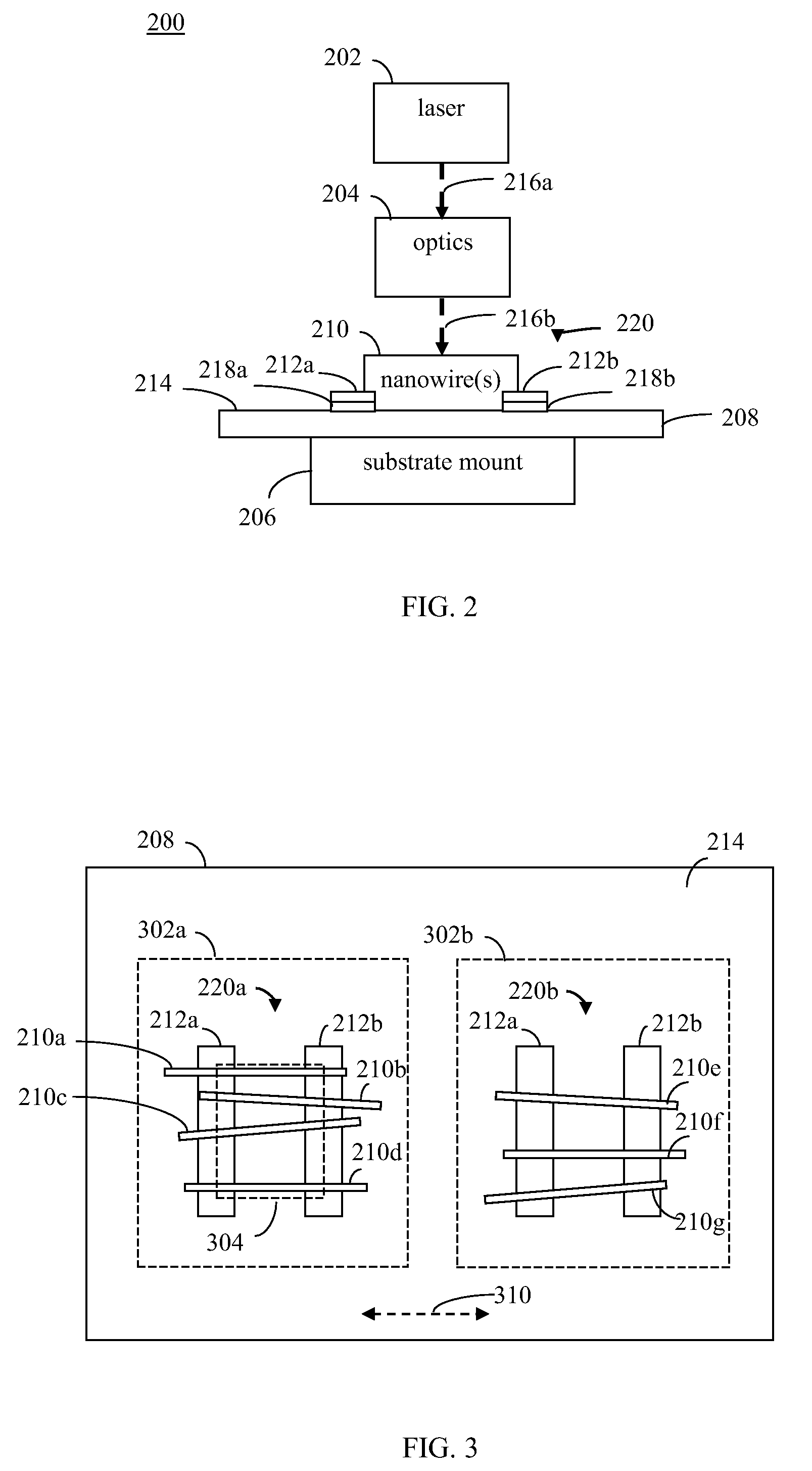Selective processing of semiconductor nanowires by polarized visible radiation
a visible radiation and selective processing technology, applied in the field of semiconductor nanowire processing, can solve the problems of damage to the crystalline lattice of nanowires, the inability to accurately align and position the appropriately doped regions of the nanowires to build functional devices using currently known assembly techniques, and the inability to accurately align and position the appropriately doped regions of the nanowires to build functional devices
- Summary
- Abstract
- Description
- Claims
- Application Information
AI Technical Summary
Benefits of technology
Problems solved by technology
Method used
Image
Examples
case b
[0108]In case B, relative to case A, larger fluences are required to anneal and / or damage the silicon nanowires. In both of cases A and B, a threshold fluence for nanowire damage is lower than reported threshold values for melting silicon thin films and bulk silicon, which are typically hundreds of millijoules per square centimeter. This may be due to a strong absorption efficiency of nanowires, and small heat losses to the ambient environment and due to a thermal conductance to the substrate. The latter attribute may be responsible for a prolonged cooling cycle, thereby allowing the nanowires to reside longer at an elevated temperature, facilitating an efficient annealing process. Assuming bulk silicon thermal properties, at a fluence level of approximately 30 mJ / cm2 for a 30 nm wire with an absorption efficiency of 0.1, a temperature rise of about 790 K is predicted if all the absorbed energy were to heat the nanowire. Such an estimate would predict a linear dependence on the flue...
PUM
| Property | Measurement | Unit |
|---|---|---|
| length:width | aaaaa | aaaaa |
| length:width | aaaaa | aaaaa |
| aspect ratio | aaaaa | aaaaa |
Abstract
Description
Claims
Application Information
 Login to View More
Login to View More - R&D
- Intellectual Property
- Life Sciences
- Materials
- Tech Scout
- Unparalleled Data Quality
- Higher Quality Content
- 60% Fewer Hallucinations
Browse by: Latest US Patents, China's latest patents, Technical Efficacy Thesaurus, Application Domain, Technology Topic, Popular Technical Reports.
© 2025 PatSnap. All rights reserved.Legal|Privacy policy|Modern Slavery Act Transparency Statement|Sitemap|About US| Contact US: help@patsnap.com



